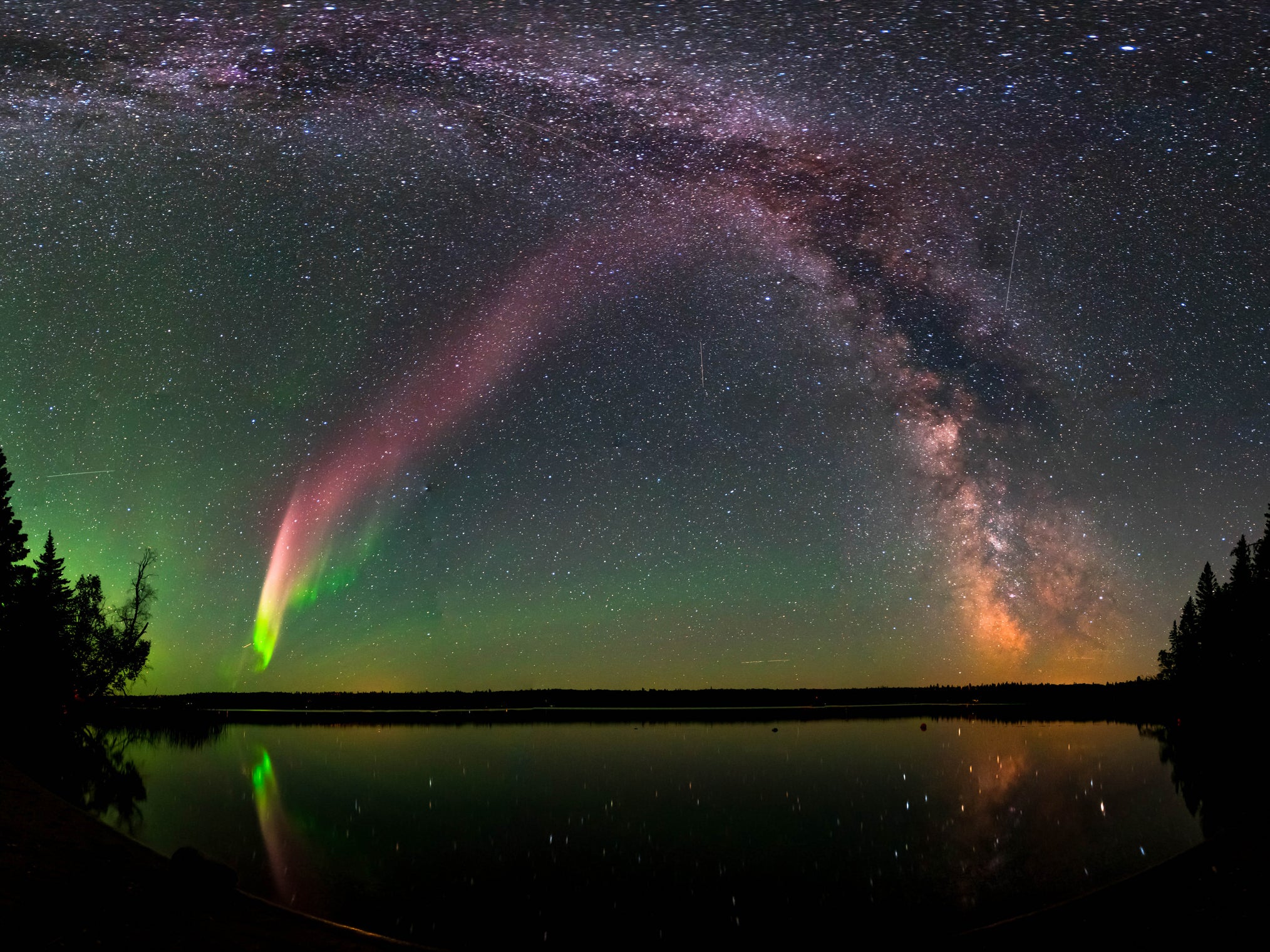Mysterious purple aurora dubbed 'Steve' by amateur stargazers spotted in Scotland
Nickname was given by group of amateur scientists and astrophotographers who first discovered it

Your support helps us to tell the story
From reproductive rights to climate change to Big Tech, The Independent is on the ground when the story is developing. Whether it's investigating the financials of Elon Musk's pro-Trump PAC or producing our latest documentary, 'The A Word', which shines a light on the American women fighting for reproductive rights, we know how important it is to parse out the facts from the messaging.
At such a critical moment in US history, we need reporters on the ground. Your donation allows us to keep sending journalists to speak to both sides of the story.
The Independent is trusted by Americans across the entire political spectrum. And unlike many other quality news outlets, we choose not to lock Americans out of our reporting and analysis with paywalls. We believe quality journalism should be available to everyone, paid for by those who can afford it.
Your support makes all the difference.Stargazers were treated to a rare and mysterious sight named “Steve” as it lit up the night skies.
The unusual purple aurora was first discovered by a group of amateur scientists and astrophotographers who gave it the nickname, Nasa said.
Its striking purple colour and appearance closer than normal to the equator sparked interest in Scotland where it was visible from the isles of Lewis and Skye this week, according to .
The green aurora borealis was also visible to stargazers in Aberdeenshire, Caithness and Shetland, the BBC reported.
Sometimes referred to as polar lights, northern or southern lights, aurora is a natural light display in the Earth's sky, predominantly seen in the high-latitude regions around the Arctic and Antarctic.
An interaction of the solar wind, a stream of charged particles escaping the Sun, and our planet's magnetic field and atmosphere causes them.
Some of the particles are trapped in the Earth's magnetic field traps some and sent them on a collision course with molecules in the atmosphere. These repeated, tiny crashes, cause energy to be released in the form of light.
The Steve aurora was first spotted and photographed up to three years ago, Nasa said. Some 30 sightings were reported in 2015 and 2016, and Steve was even spotted from above by a passing European Space Agency satellite.
Scientists have since studied it further and filled out its name – the Strong Thermal Emission Velocity Enhancement. It is created in the same way as a normal aurora,
Nasa said, by charged particles from the Sun impacting Earth’s magnetic field.
But it travels along “different magnetic field lines”, the space agency said. It appears as “a very narrow arc, aligned east-west, and extends for hundreds or thousands of miles”.
Nasa is now asking citizen scientists to document the phenomenon in photographs for its Aurorasaurus project.
Join our commenting forum
Join thought-provoking conversations, follow other Independent readers and see their replies
Comments